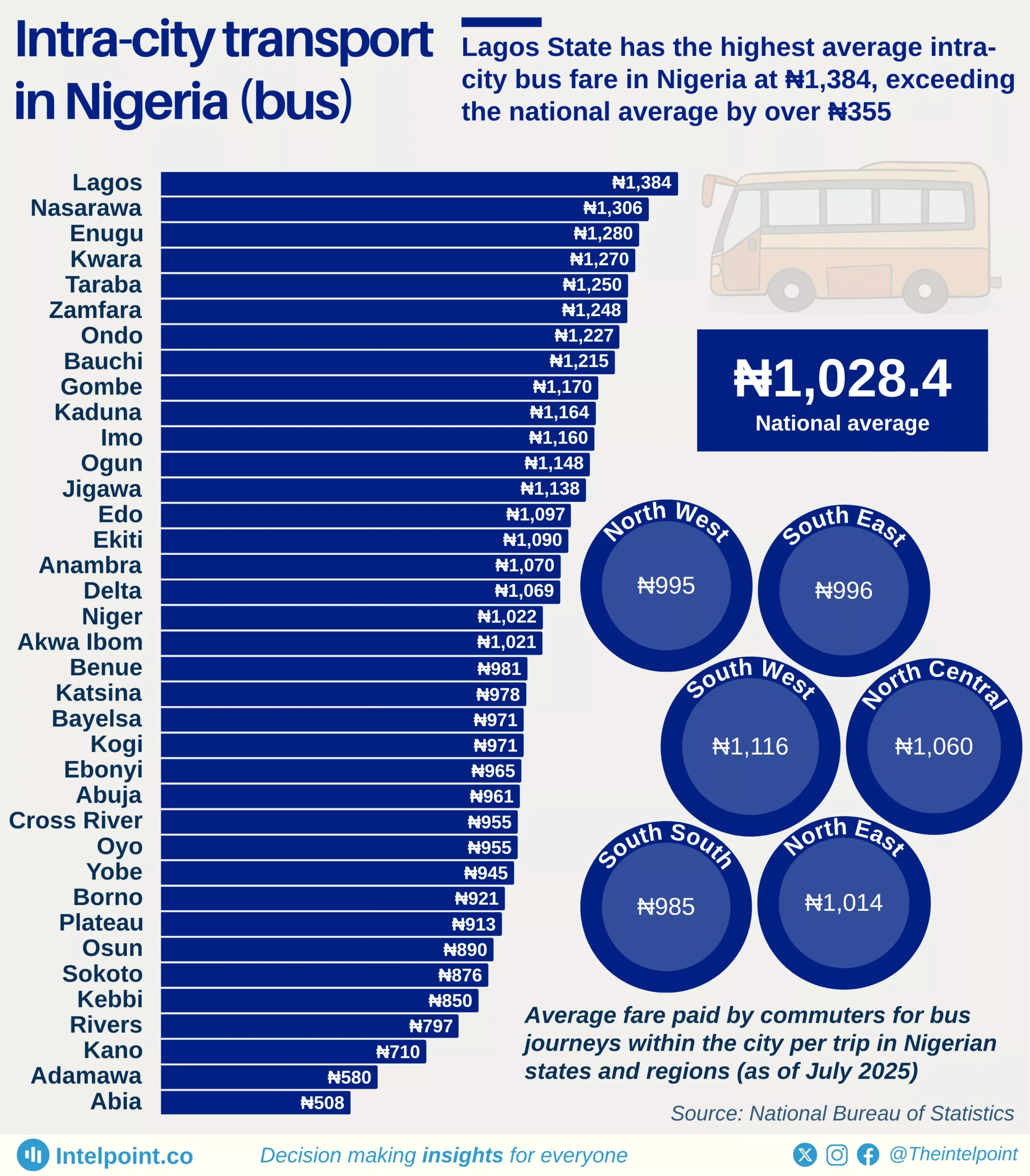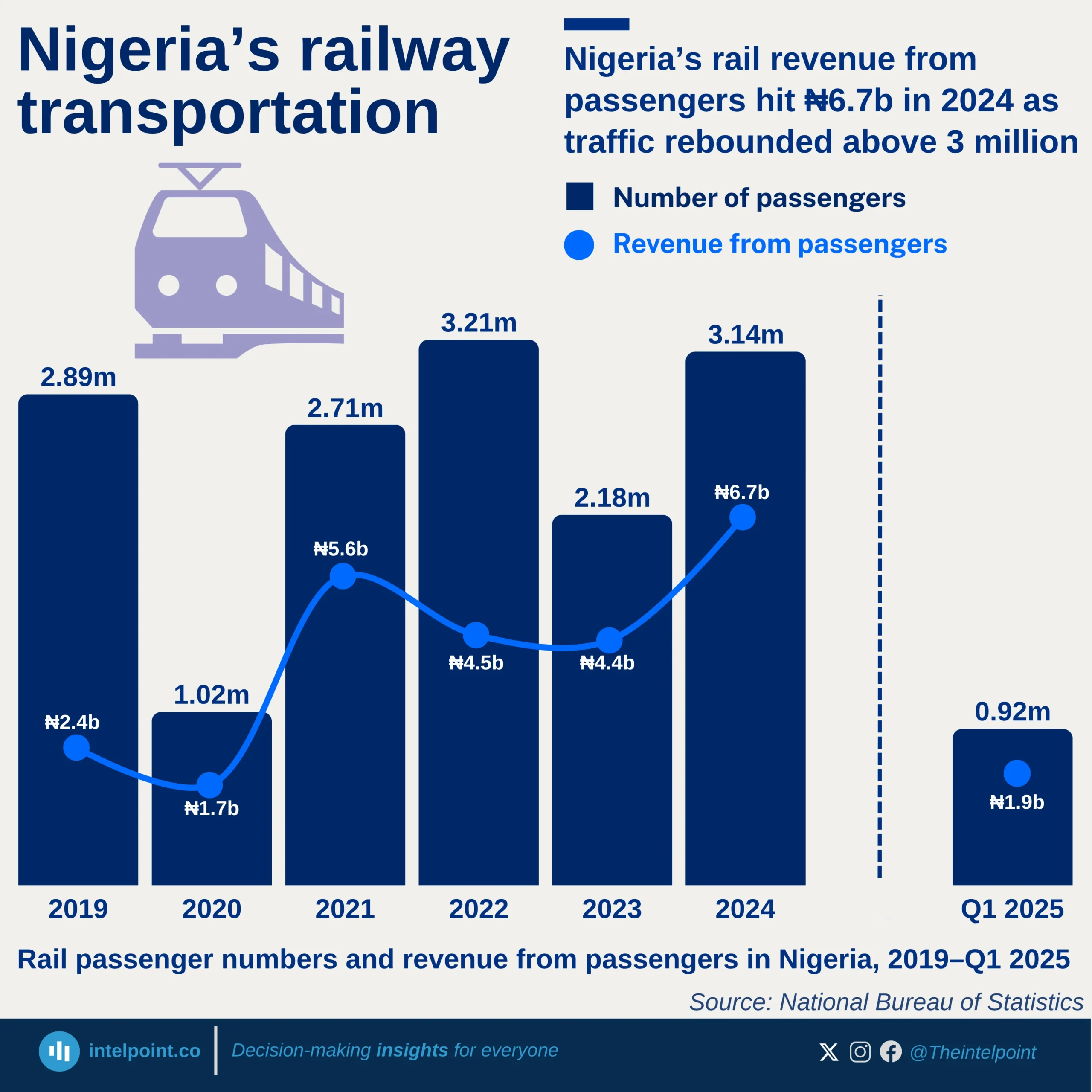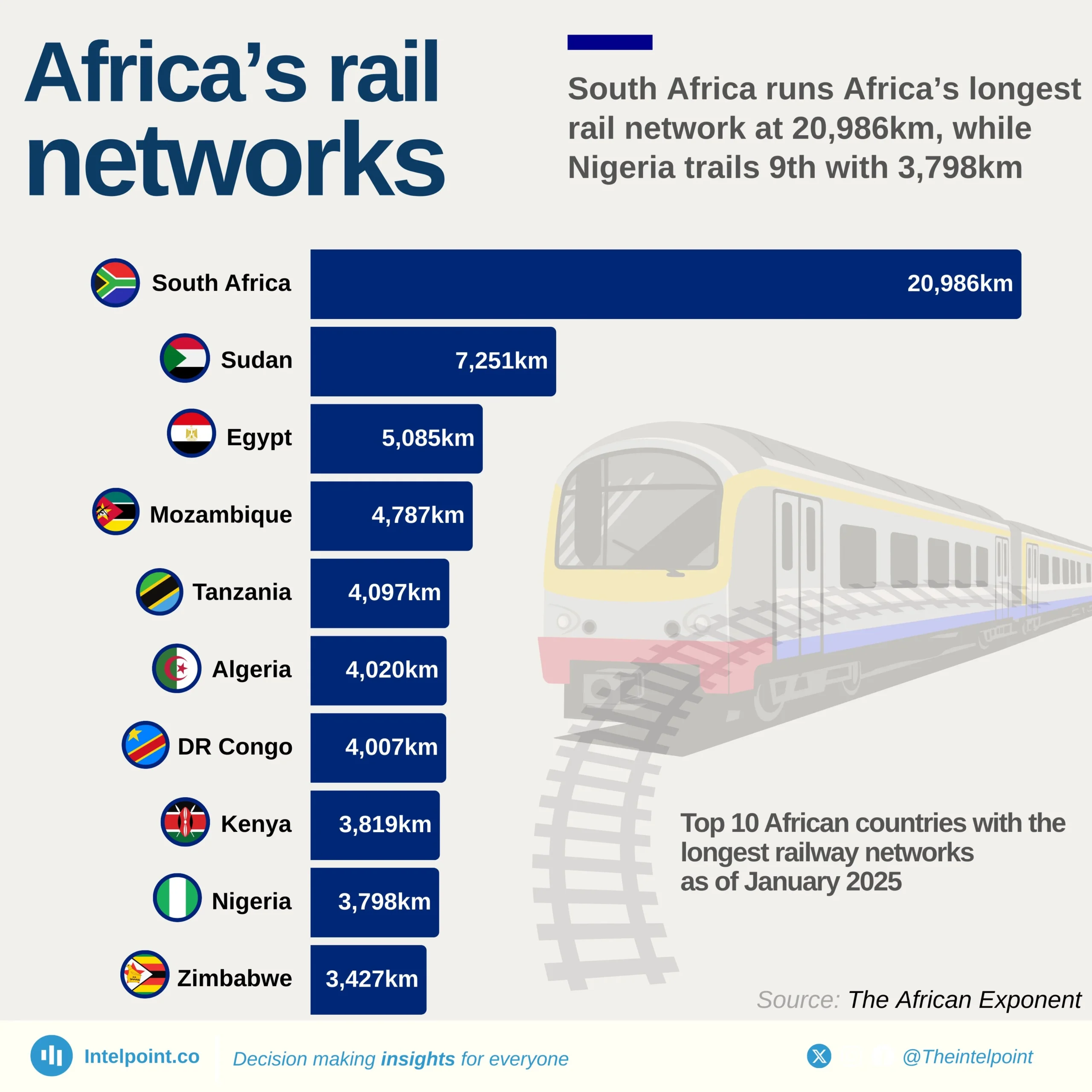Anambra State recorded the highest average intercity bus fare in Nigeria at ₦9,862 as of July 2025, exceeding the national average of ₦8,005 and nearly doubling that of Kwara, which had the lowest fare at ₦5,991. This significant cost difference (₦3,871) highlights how distance, fuel prices, route demand, and regional economic activity shape transport pricing across Nigerian states.
Southern states dominate the top of the list, with Anambra, Imo, and Oyo leading, while northern states like Kwara, Bauchi, and Benue fall among those with lower intercity fares. At the regional level, the South West and South East recorded the highest average fares at ₦8,570 and ₦8,547, respectively — both above the national average. In contrast, North West (₦7,711) and North Central (₦7,776) recorded the lowest regional averages.





